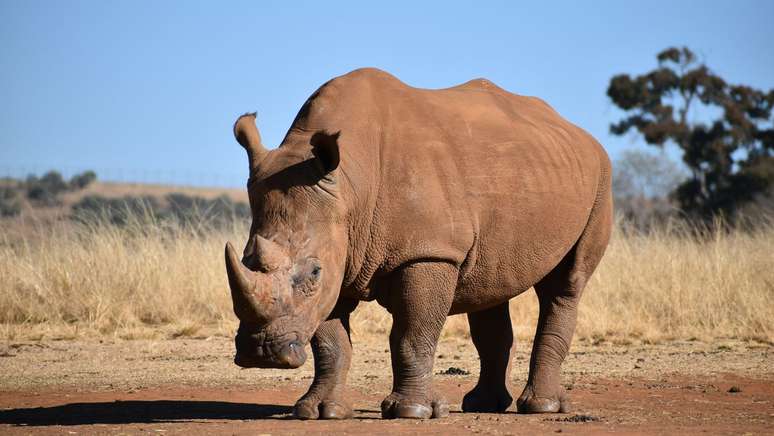An initiative in South Africa aims to prevent the smuggling of rhino horn by injecting radioactive material, making it unfit for consumption.
In South Africa, an initiative launched last Tuesday (25th), radioactive material in rhino horns to make them easier to detect at border posts and prevent illegal hunting of the animal. The work is led by James Larkin, director of the Radiation and Health Physics Unit at the University of the Witwatersrand.
- The first in vitro fertilization of rhinos could save endangered species
- The 10 strongest animals in the world
Most of the world’s rhinos, animals at risk of extinction, is located in the country, so it ends up having a high presence of illegal hunting, also called poaching. The animal’s horns satisfy above all the clandestine demand in Asia, where the traditional medicine of some cultures considers the object therapeutic and/or aphrodisiac.
In the Waterberg region there is a rhino orphanage called Limpopo, in north-west South Africa. That’s where the science teams implanted the chips radioactivewhich makes the horns essentially useless to hunters, as they are unfit for human consumption.
Inserting radiation into rhinos
For the procedure, the rhinos are sedated and do not feel any pain. A radioactive dose is low, so it has no impact on the animal’s health or the environment. Despite the efforts of the South African Ministry of the Environment, 499 rhinos were killed in 2023, mostly in government-supervised conservation parks, an increase of 11% compared to 2022.
First radioactive rhino horns to curb poaching in South Africahttps://t.co/JWfbuiyX6Q pic.twitter.com/Wfv6d4OjQi
— ECR_Newswatch (@ECR_Newswatch) June 26, 2024
The project is in the testing phase, in which 20 large mammals will have radioactivity injected into their horns. The initiative was called Rhisotope (a play on words between “isotope” and the English “rhinoceros”), and the main objective was to radiation detectors from all over the world are able to detect the implanted tracks.
International border crossings generally have such detectors, installed in an effort to prevent nuclear terrorism. In addition to preventing smuggling, the work must prevent hunting for consumption or sale for consumption more efficiently. Previously, there have been attempts to shave off the horns or poison them, but as they grow back and lose the poison, the animals continue to be hunted.
The material, drilled into the horns, is supposed to last five years, and is cheaper than shaving the horns every 18 months, when they grow back. There are about 15,000 animals living in South Africa, and the illegal market for their horns is in high demand: in Vietnam they were once more expensive than cocaine.
Other projects have attempted to move the large mammals to other parts of Africa or safely remove their horns. Poachers, instead of sedating them into retreat, usually kill rhinos.
Trends on Canaltech:
- AstraZeneca “admits” a rare side effect of the Covid-19 vaccine
- WHO warns of new mpox variant, calls for urgency
- The Y chromosome evolves much faster than the X chromosome
- How Einstein’s Physics Lets You Go Back in Time
- A mountain-sized asteroid passes close to Earth this Thursday (27); clock
- Donna undergoes a fecal transplant and “gets” her boyfriend’s depression
Source: Terra
Rose James is a Gossipify movie and series reviewer known for her in-depth analysis and unique perspective on the latest releases. With a background in film studies, she provides engaging and informative reviews, and keeps readers up to date with industry trends and emerging talents.







